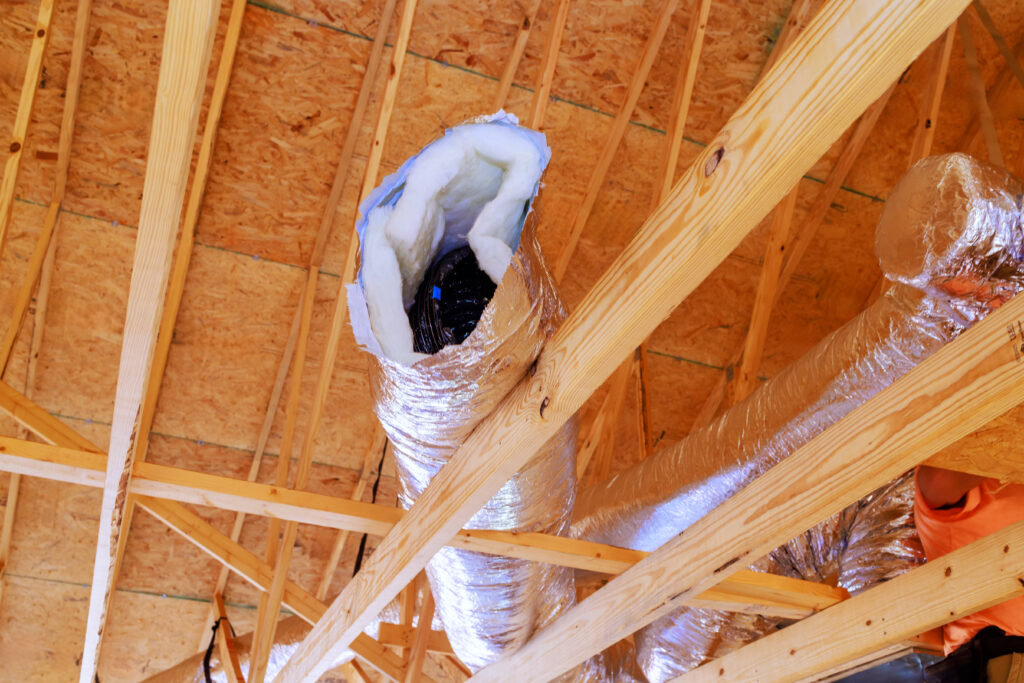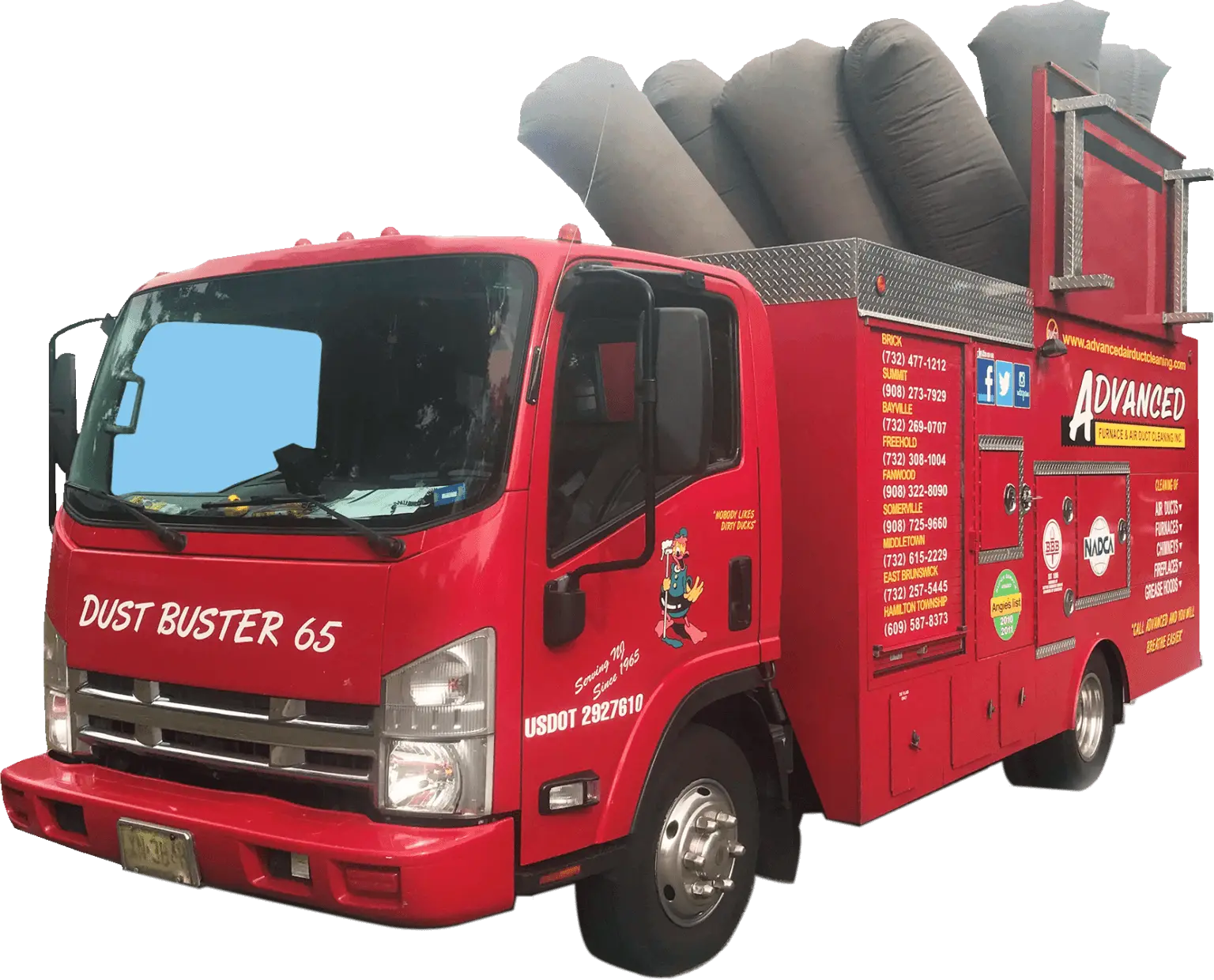
If you’re noticing white powder coming from your ducts or vents, it could be caused by a few different factors, many of which relate to issues with your HVAC system, insulation, or ductwork.
Common Causes Of White Powder Coming From Ducts
1. Degrading Fiberglass Insulation:
•Source: Many HVAC systems and ductwork are lined or insulated with fiberglass. Over time, the insulation can degrade, causing fine fiberglass particles or dust (which can appear white) to get blown through your vents.
•Impact: This can be a health hazard, as inhaling fiberglass particles can irritate the respiratory system. If this is the cause, you may also notice increased dust or allergic reactions among occupants.
2. Deteriorating Ductwork Lining:
•Source: If your ducts are internally lined with fiberglass or another type of insulation, the lining may have begun to break down due to age, temperature fluctuations, or moisture. As the lining deteriorates, it releases white powdery particles into the air.
•Impact: This can compromise indoor air quality and may eventually lead to poor HVAC efficiency if the duct lining becomes heavily damaged.
3. Calcium or Mineral Deposits:
•Source: If you have a humidifier attached to your HVAC system or live in an area with hard water, mineral deposits like calcium can accumulate in the ducts over time. When the humidifier operates, it can spread fine white mineral dust through the vents.
•Impact: This fine, chalky dust is usually harmless, but it can accumulate and create a mess around your vents. It might also indicate that your humidifier needs maintenance, such as cleaning or descaling.
4. Drywall or Construction Dust:
•Source: If recent renovations or construction work have been done in your home, drywall dust or other fine particles could have settled in your ducts and are now being blown out through the vents.
•Impact: This is usually a temporary issue, but it can lead to excessive dusting and may trigger allergies or respiratory issues if not cleaned from the ductwork.
5. HVAC System Contaminants:
•Source: HVAC systems can accumulate various types of dust and debris over time, especially if the air filter is dirty or if the system hasn’t been maintained properly. Some of this dust, when circulated through the system, can appear as white powder.
•Impact: Regular HVAC maintenance, including air filter changes and duct cleaning, can prevent dust and powder from circulating through your vents.
6. Mold Growth (Salt Crystals):
•Source: In some cases, mold growth inside ducts can produce a byproduct that appears as white powder, especially if the mold is drying out and releasing spores or salt crystals as it dehydrates.
•Impact: Mold can be a serious health concern and should be addressed immediately. If mold is the cause, you may also notice musty odors or increased respiratory issues among those in the home.
7. Efflorescence (Moisture-related Salt Deposits):
•Source: If there is moisture present in your ducts (perhaps from condensation or a poorly functioning humidifier), salts from building materials may dissolve in the water. When the water evaporates, it can leave behind a white, powdery residue known as efflorescence.
•Impact: Moisture in ducts can lead to mold growth, rust, or damage to the system. Efflorescence itself is harmless but indicates a moisture problem that should be addressed to prevent further issues.
How to Address the White Powder
1. Inspect and Replace Air Filters:
A clogged or ineffective air filter can allow dust, fiberglass particles, or other contaminants to circulate through your HVAC system. Replacing your air filter with a high-efficiency filter can help reduce dust.
2. Duct Cleaning:
Have a professional clean your ducts, especially if the white powder is the result of dust, construction debris, or degrading insulation. This will help improve indoor air quality and reduce the amount of powder coming from the vents.
3. Check Humidifier and Water Quality:
If you have a whole-house humidifier, inspect it for mineral buildup. It may need to be cleaned or descaled. Using distilled water or installing a water softener can help reduce mineral deposits in the system.
4. Inspect Duct Insulation and Lining:
If the white powder is fiberglass from deteriorating duct insulation, you may need to encapsulate or replace the ductwork. A professional HVAC technician can inspect and recommend the best course of action.
5. Moisture and Mold Mitigation:
If the powder is due to moisture-related issues or mold, addressing the moisture source is crucial. This might involve repairing leaks, improving ventilation, or cleaning and treating the ducts for mold.
6. Post-Construction Cleaning:
If the white powder is drywall or construction dust, it’s essential to thoroughly clean your ducts after any renovation work. This can be done by professional duct cleaning services to remove any residual debris.
7. Oxidation from moisture.
Overtime, moisture will cause your ducts to oxidize and white powder will become airborne. Cleaning and coating the duct is a cost effective way to rid this issue.
Prevent White Powder With Advanced Air Duct Cleaning
White powder coming from your ducts can be caused by degrading insulation, mineral deposits, construction dust, or mold. It’s important to identify the source to maintain good indoor air quality and HVAC efficiency. Regular maintenance, duct cleaning, and addressing moisture or insulation issues can help prevent this problem. For these solutions, look no further than Advanced Air Duct Cleaning. Reach out today to get started.

